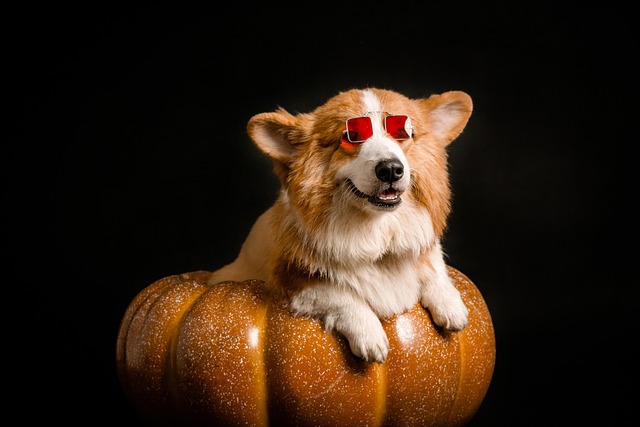
How can I tell if my dog's heatstroke is serious
Let’s be real: It’s a sticky August morning in Los Angeles, and you took your 2-year-old Golden Retriever, Max, for a walk a little later than usual
Imagine you’re in your Chicago apartment, setting a bowl of Buddy’s favorite kibble on the floor—your 10-year-old Lab mix used to crunch through it in 2 minutes, but today he sniffs it, licks a few pieces, and walks away. You kneel down to check his mouth, and when you gently lift his lip, you see red, swollen gums and a brown buildup on his back teeth. If you’re a new US dog owner with a senior pup, this moment might make you realize: old dog teeth need extra care, and small neglects can turn into big pain—like when Buddy stops eating his favorite treats because chewing hurts. The good news is, keeping his teeth healthy doesn’t require fancy tools; it just takes simple, daily habits tailored to his senior needs.
First, let’s break down why old dog teeth are tricky (no complicated jargon, promise). As dogs age, their saliva gets thinner—so it doesn’t wash away food bits and plaque (that sticky, brown gunk) as well as it used to. Over time, plaque hardens into tartar, which irritates their gums, makes chewing painful, and even leads to infections that spread to other organs. My vet in Austin explains it like this: “A senior dog’s teeth are like old shoes—they’ve worked hard, so they need softer care, not rough treatment.” A neighbor learned this the hard way: her 11-year-old Corgi stopped eating entirely because tartar had made his gums so sore—by the time she took him to the vet, he needed two teeth pulled. Unlike puppies, old dogs can’t handle harsh chew toys or frequent cleanings, so gentle prevention is key.
Here’s how to care for Buddy’s teeth, step by step, right in your apartment. Start with daily gentle brushing—but forget human toothpaste (it’s toxic to dogs!). Grab a dog-specific toothbrush (small, soft-bristled) and meat-flavored toothpaste (Buddy will think it’s a treat). Sit on the floor with him, hold his muzzle gently (never squeeze!), and brush the outside of his teeth in slow circles—focus on the back teeth, where tartar builds most. If he resists, stop after 10 seconds, give him a freeze-dried chicken treat, and try again tomorrow—positive reinforcement beats forcing it (US pet culture hates fear-based care!). Next, swap hard chew toys for soft ones: rubber dental chews (like Kongs stuffed with mashed pumpkin) massage his gums without breaking teeth. Avoid hard bones or antlers—they can crack his already weak enamel. Finally, adjust his food: soak his kibble in warm water for 2 minutes to soften it—chewing soft food is easier on sore gums, and he’ll start finishing his bowl again.

Now, let’s tie in US rules and pet culture you can’t ignore. First, compliance: Even while focusing on teeth, never let Buddy’s rabies vaccine lapse—Illinois requires yearly boosters for all dogs, and unvaccinated pups can’t get dental cleanings (vets won’t treat them to avoid disease spread). When you walk him, always bring poop bags—Seattle fines $250 for uncollected waste, and dental pain can make Buddy irritable; keeping walks calm (and clean!) avoids conflicts with other dogs. Second, community and apartment tips: If Buddy’s teeth hurt, he might snap if kids or other dogs get too close—when walking, keep him on a short leash and let him set the pace. In your apartment, keep dental treats (like soft, vet-approved chews) near his bed—this turns “teeth care” into a comfort, not a chore. Third, cultural musts: Never scold Buddy for refusing to chew or eat—pain makes him act out, and punishment will make him fear you checking his mouth. Instead, praise him when he lets you brush for 5 seconds, or takes a soft chew—kindness keeps him cooperative.
Don’t skip vet dental checkups, either—senior dogs need twice-yearly exams, and your vet can do a gentle cleaning (no anesthesia if it’s mild!) to remove tartar you can’t reach. Jot down notes to share: “Does he chew on one side only?” “Is his breath worse than usual?”—these clues help the vet tailor care.
With time, Buddy will start crunching (softly!) again and finish his bowl without hesitation. Remember: old dog teeth care isn’t about perfection—it’s about making sure he eats comfortably and stays pain-free.

Let’s be real: It’s a sticky August morning in Los Angeles, and you took your 2-year-old Golden Retriever, Max, for a walk a little later than usual

You're enjoying a summer afternoon at the park when you notice your dog has stopped panting and appears disoriented - their gums are bright red

Let’s paint the picture: You’re in your Denver apartment, watching your 4-year-old Boston Terrier, Ruby, plop down mid-play session with her favorite toy

Many dog owners notice their pets nails seem shorter after regular walks,but how much does this daily activity actually help?The answer depends on where you walk—concrete sidewalks or asphalt streets gently file nails as a dog's paws hit the ground

Most dog owners notice their pup scooting across the carpet at some point, but few connect it to impacted anal glands. These small sacs near a dog’s rectum secrete a scent for marking territory

Most vets agree that regular dog teeth cleaning is key to avoiding painful dental issues later. For healthy adult dogs, a professional cleaning at the vet’s office every 12 to 18 months usually works well.